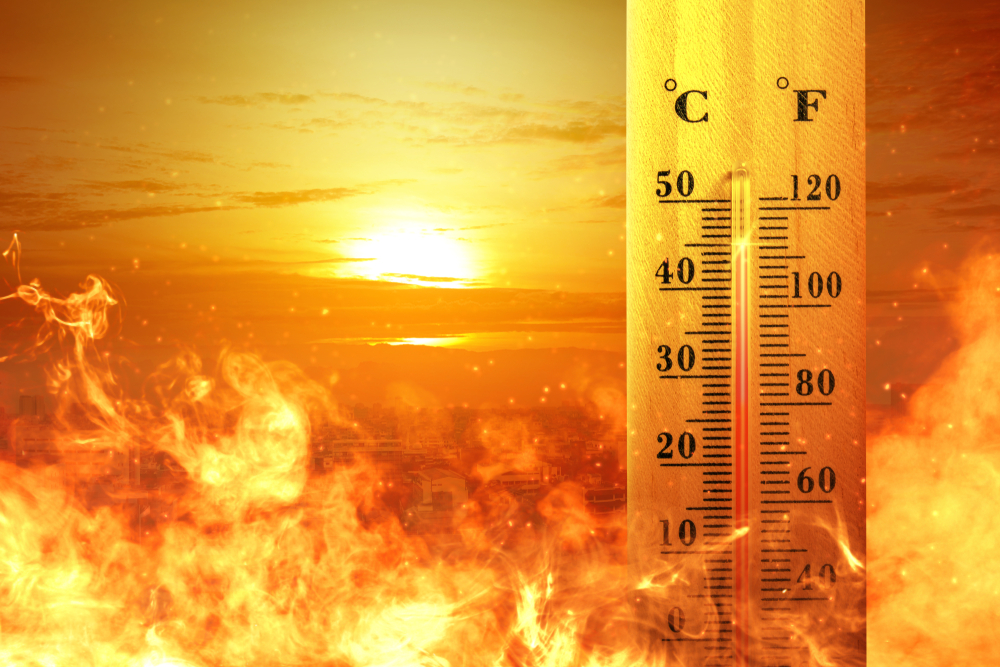I’m guessing your view of the current heatwave which has been sweeping the UK will depend on a few factors. If you live in the areas covered by the “red alert” and you had to work, your view may be somewhat different to someone living in Dubai where I’m sure people are wondering what all the fuss is about (a view held by a lovely lady I talked to from Brazil this week!). I personally live in an “amber alert” area in the usually chilly North East of England, where we were basking in temperatures in excess of 30 oC. Thanking our lucky stars we aren’t in Lincolnshire where the official temperature topped 40oC for the first time in history. Apparently the records are set using official data and not Dave from Facebook reporting that their car is at 50 degrees…
What is the law in the UK on workplace temperature?
Well there are no maximum limits, and the minimum temperatures that people quote are actually not “legal” but are in fact in the approved code of practice (ACOP). What the Workplace Health Safety and Welfare Regulations 1992 requires is a “reasonable” indoor temperature. The ACOP suggests ways in which this can be achieved. This, coupled with the standard requirement to carry out a risk assessment under the Management of Health and Safety at work regulations 1999 should mean that employers are reducing the risk of heat exposure in both indoor and outdoor workplaces. This does of course rely on employers also being reasonable and making sensible adjustments to working routines, conditions and activities as appropriate. It may be great in theory to air condition an entire factory, but that may not be possible in practice. So improved ventilation, additional rest periods, reduced work rate, altered patterns of work and breaks with cool drinks in cool areas are all sensible modifications.
Clearly you can’t air condition the whole of Lincolnshire either! The company I was working at on Tuesday (through the peak of the heat) provided chilled drinks, ice creams, ice lollies and rest breaks for their staff and the good will alone was incredible. I also heard terrible anecdotal stories of workers not given any protection from the heat on construction sites – wholly unacceptable!
But should we need to be told to look after our employees?
Does the head teacher need to be told to let the children take their blazers off when it’s at the height of summer? Is it not obvious that working outside in the blazing sun could be dangerous? Hopefully most employers could think round the problem and with judicious use of the ACOP Workplace health, safety and welfare. Workplace (Health, Safety and Welfare) Regulations 1992. Approved Code of Practice and guidance L24 (hse.gov.uk) and the HSE microsite Temperature (hse.gov.uk) implement sensible controls to reduce the risk. The TUC however disagrees. They are calling for absolute maximum temperatures for indoor workplaces TUC calls on employers to keep their staff safe as temperatures soar | TUC.
So what do we think about this?
Personally I find it a rather simplistic view which I feel is focused on indoor workers who normally wouldn’t be affected by hot workplaces. It largely ignores outdoor workers. Tthere is a passing reference to outdoor workers having breaks, drinks, sunscreen and PPE but no suggestion of a maximum temperature for outdoor working. I think perhaps forgets that there are sectors where the workforce are exposed to high heat (and in some cases high humidity) on a daily basis, such as kitchens, bakeries and glass factories. With the best will in the world, controls can be implemented but when a glass furnace is over 1000oC that is going to result in “toasty” conditions in the workplace at any time of year, and the person serving you in the chip shop is standing by a vat of boiling oil!
The workers here aren’t superhuman or possessing special powers akin to a Marvel character, they are acclimatised workers who are subject to the same sensible and reasonable controls that are suggested by the HSE. And therein lies the problem! For most of us in the UK we aren’t acclimatised. And employers may be ill prepared. So maybe the mantra of “preparation, preparation, preparation” should be deployed so that we are ready for the next heat wave should it occur. So if you have had to develop controls in a hurry take the time to review your risk assessment, learn from this experience and document the controls so that next time you can approach it in a cool, calm and collected manner (pun absolutely intended). If you felt able to relax the dress code, write it down. If you sourced lighter weight summer PPE, stock up for next year. Don’t get rid of the portable coolers and fans you bought – stash them away safely, their time will come again!
Too much fuss?
My other pet peeve is the “oh it’s all health and safety gone mad” and “there was none of this fuss in the summer of ‘76”. When my Mum reported that it was “roasting” and according to Wikipedia the temperature peaked at a paltry 35.9oC. Wiki also cites 20% “excess deaths” and a significantly increased hospital admissions rate. So whilst yes it was hot and yes many survived 1976, it was not a trivial matter. We were not made of sterner stuff then and don’t start me off on the workplace fatality rate in the 1970. No extreme weather conditions are trivial and the summer of ’22 shouldn’t be shrugged off either or we will be discussing “excess deaths” once again.
Final note
I will, however, seek to leave you with a funny video my friend shared from BBC Scotland Its So Hot (BBC Scotland) – YouTube. I think being close to the border I can get away with it!
Remember – ice cream is an excellent control measure (whatever the hazard!)

Zoe Neasham
RRC Lead Tutor
